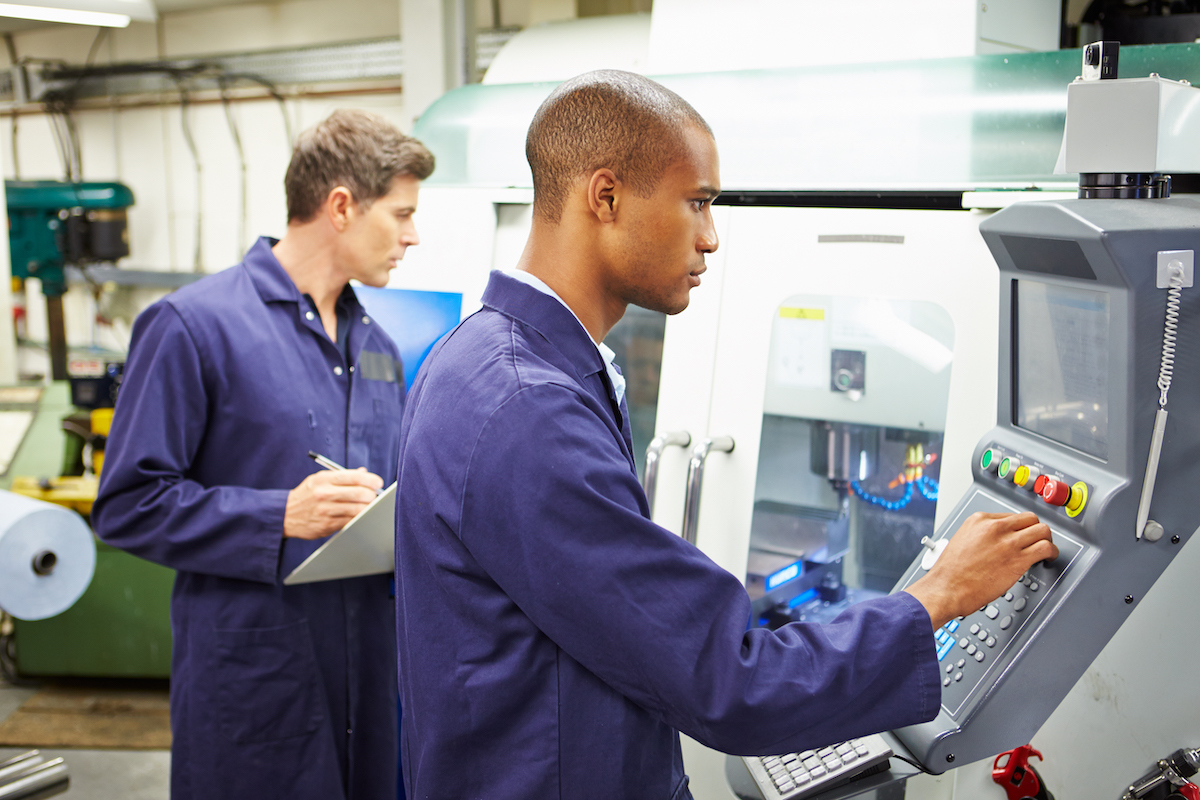Keeping an Eye on Manufacturing for Sustained Job Growth
As job boards, help wanted posters and employers nationwide report, a post-pandemic hiring surge started in 2021 and continues today. Contra Costa County is no exception, with a 3.1% unemployment in July 2022. To understand employers’ hiring intentions and challenges, the Workforce Development Board of Contra Costa County conducted an employer survey in early 2022.
In this fourth and final blog about the results of our employer survey, we examine employers’ hiring intentions. Survey respondents indicated that almost 60% of area businesses plan on creating 1-5 new jobs in 2022, and we want to understand which industries are hiring and for which types of roles.
The California Employment Development Department in July reported that in the last 12 months, the highest jobs gains in Alameda and Contra Costa counties were in:
- Leisure and hospitality (up 10,000 jobs), mostly in food services
- Trade, transportation and utilities (up 9,200 jobs), mainly in retail trade
- Private educational and health services (up 6,700 jobs), primarily in health care and social assistance
- Manufacturing (up 6,500 jobs), led by computer and electronic products
Stephen Baiter, executive director of the East Bay Economic Development Alliance (EDA), sees leisure and hospitality and retail trade gains leveling off after explosive growth. However, he views manufacturing as an exceptionally hot spot with a promising future for the East Bay.
“Manufacturing has been strong in the East Bay for a while now,” Baiter said. “This is due not only to Tesla’s strong production growth and corresponding spillover effects for local suppliers, but this also extends to the biomedical, medical devices and computer equipment subsectors.”
In 9 years, manufacturing employment in Alameda and Contra Costa counties increased 27 percent, from 78,104 jobs in 2013 to 99,472 jobs in 2021. Moreover, each manufacturing job produces an additional 5-7 subsector jobs for the regional economy.
Mark Martin, Ph.D., regional director for advanced manufacturing in the Bay Area Community Colleges (BACC) and an AMBayArea board member, reports high employer demand for manufacturing positions such as industrial maintenance technicians, electronic technicians, machinists, entry-level production workers and welders. Industries needing these workers are diverse and include semiconductor equipment suppliers, green energy, vehicles, medical devices and more.
“Demand for skilled workers far outweighs supply,” Martin said. “Schools closed during the pandemic, and when they reopened, it was with reduced class sizes. Then when the economy bounced back, and jobs became available again, people returned to work and not to school. Now we have a booming need for goods but a shortage of skilled workers to manufacture them.”
How to Increase Skilled Worker Supply? Increase Manufacturing Awareness and Education
Martin said people can find well-paying careers in manufacturing, and education is available, but one key is helping people know these careers exist. The BACC includes manufacturing as one of their critical sectors, and they work in conjunction with the WDBCCC, East Bay Works, AMBayArea and other organizations on workforce development. Recent collaborations to promote manufacturing careers include:
- AMBayArea Manufacturing Ambassador Program, in which employee volunteers visit K-12 classrooms to explain manufacturing and engineering jobs.
- Intro to Manufacturing class geared to unemployed adults or workers who want to upskill. Piloted in an online format last spring, this class explains manufacturing and various education pathways, if students decide to pursue a manufacturing career.
- Manufacturing Course Catalog that helps potential students or workers seeking to upskill find their ideal training program.
Those seeking manufacturing employment can get trained in one to two years and maybe less, Martin said. Most manufacturing-related certificates are 15-40 units, but some are less than 15. He emphasized that people with a certificate can usually get hired in a well-paying job right away.
Sustained Low Unemployment and High Worker Demand?
Baiter predicts that our current low unemployment levels will stay low for the foreseeable future.
“I’m not sure we’re going to see the kind of job gains that we’ve seen” from early post-pandemic comebacks, he said. “Inflation and the cost of doing business are starting to spiral out, and hiring will slow a bit. However, we’ll still have opportunities in these growth areas [like manufacturing] because the demand for workers with those skill sets will not go away.”





